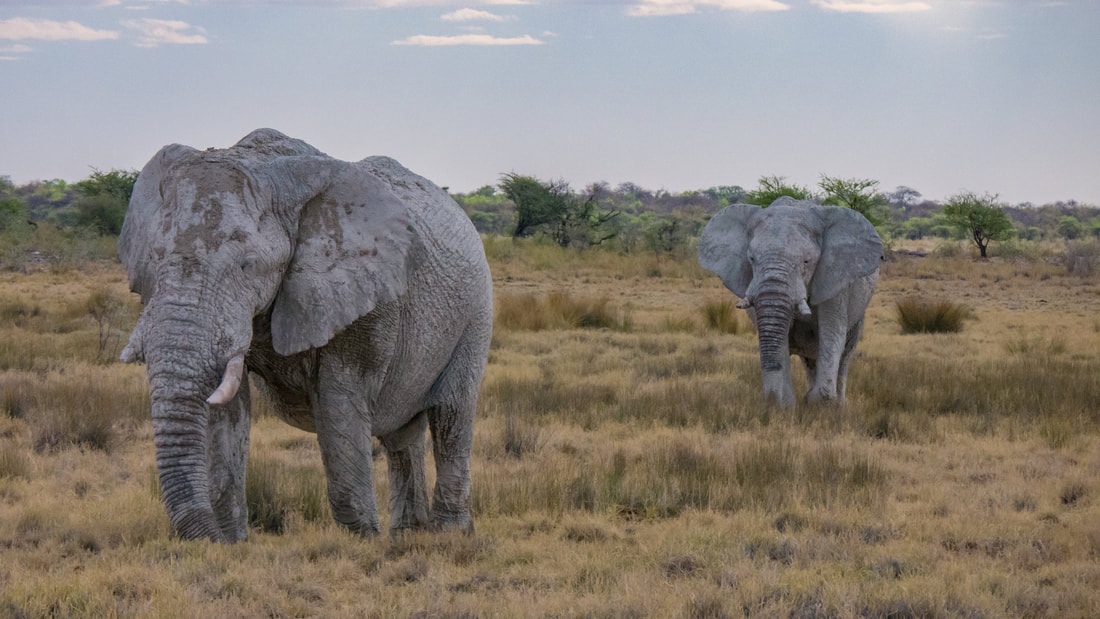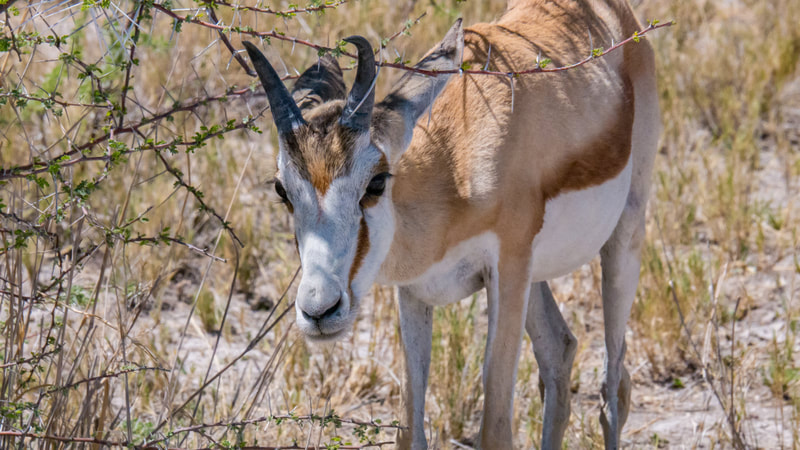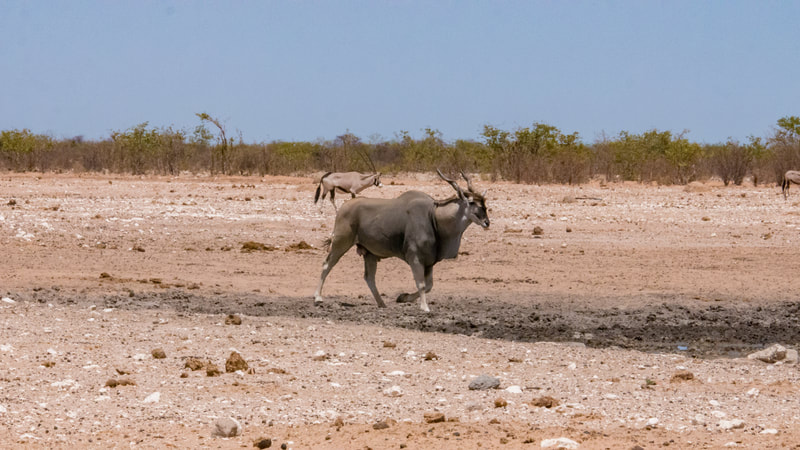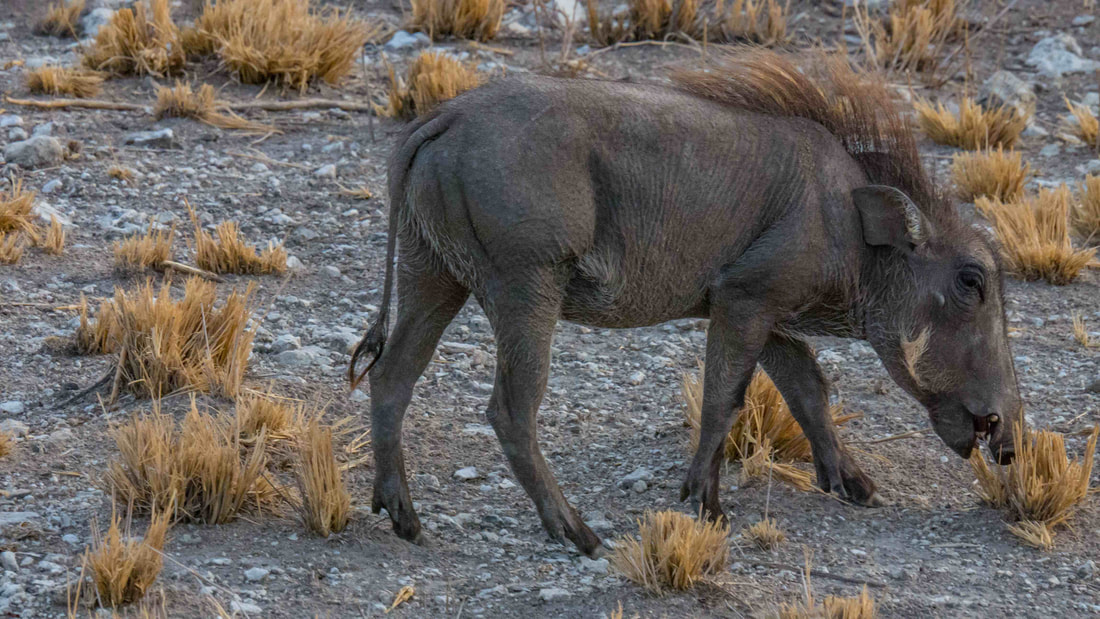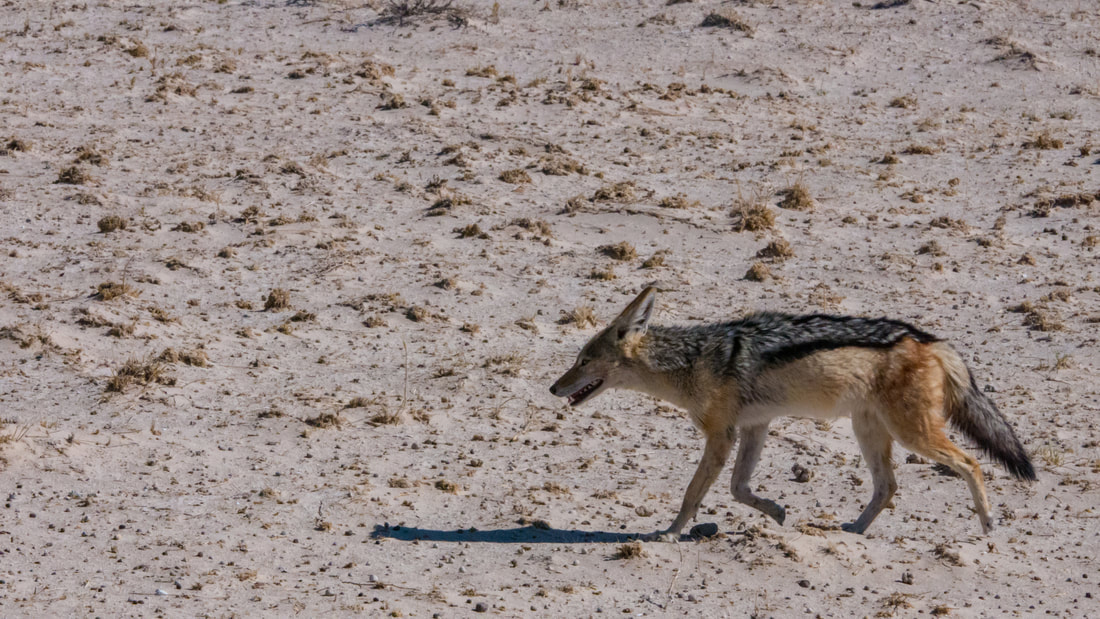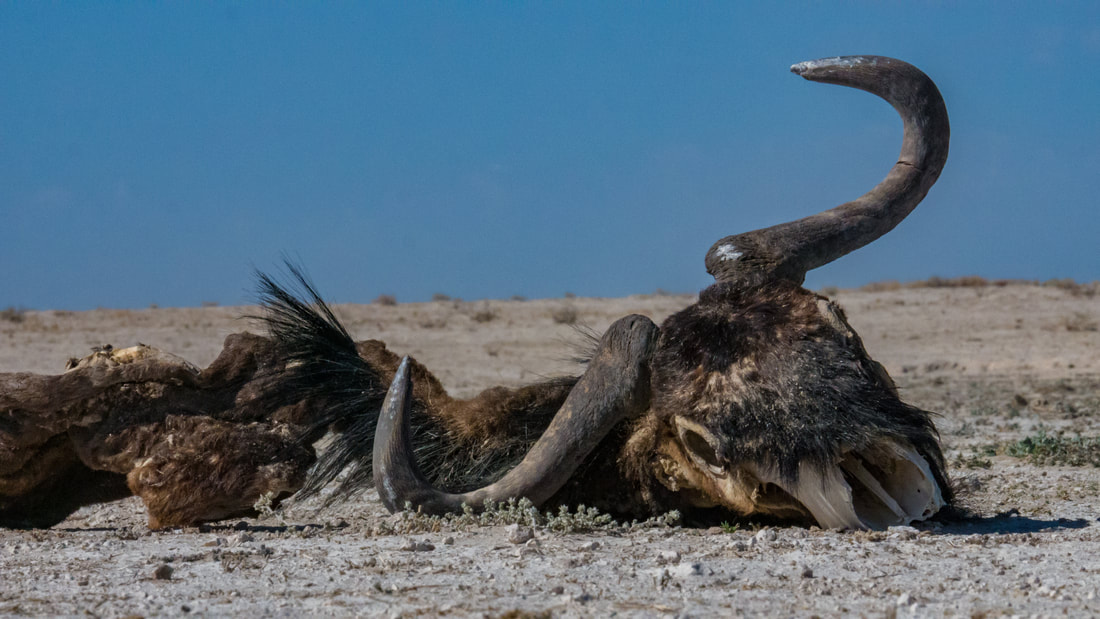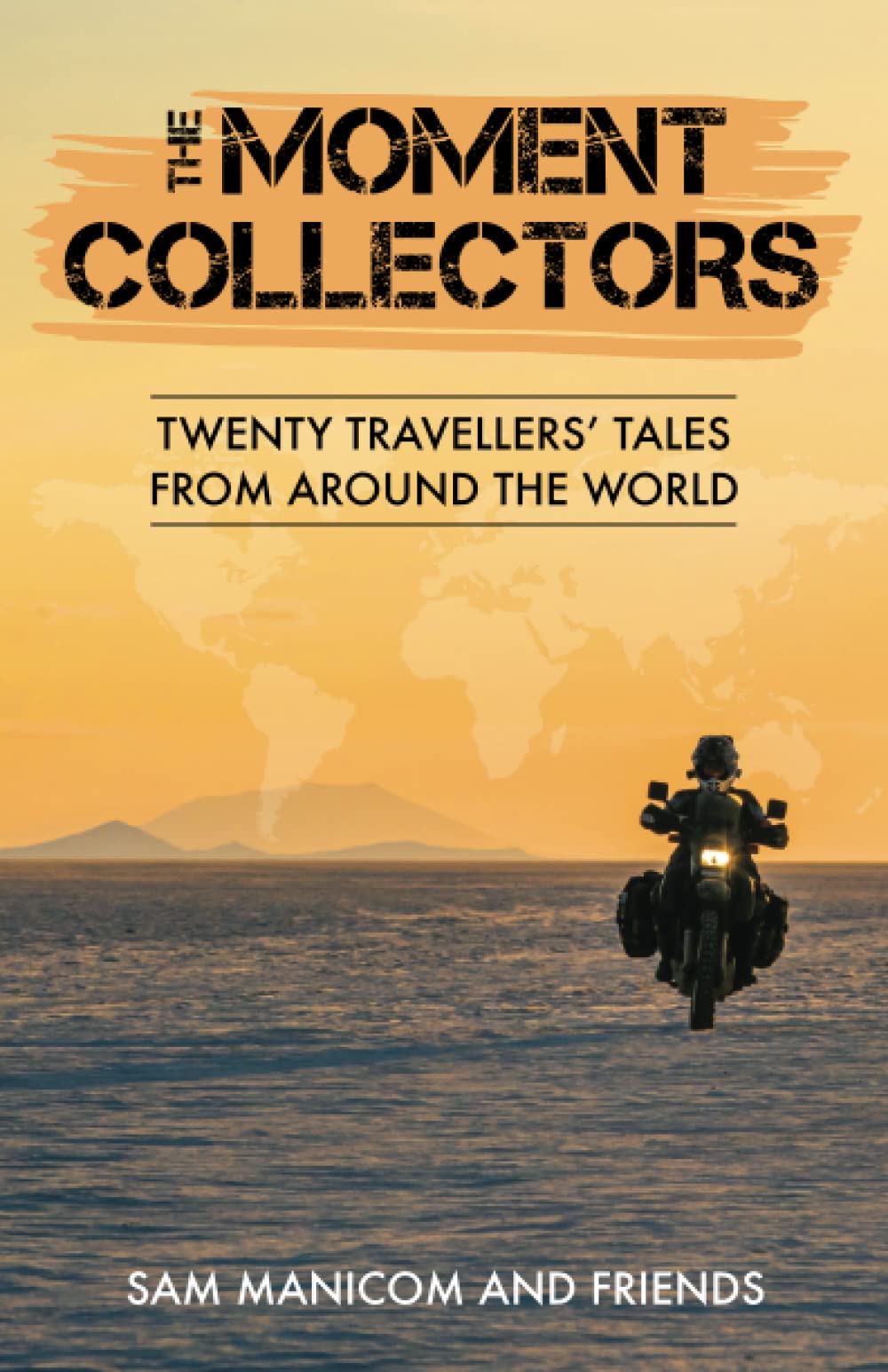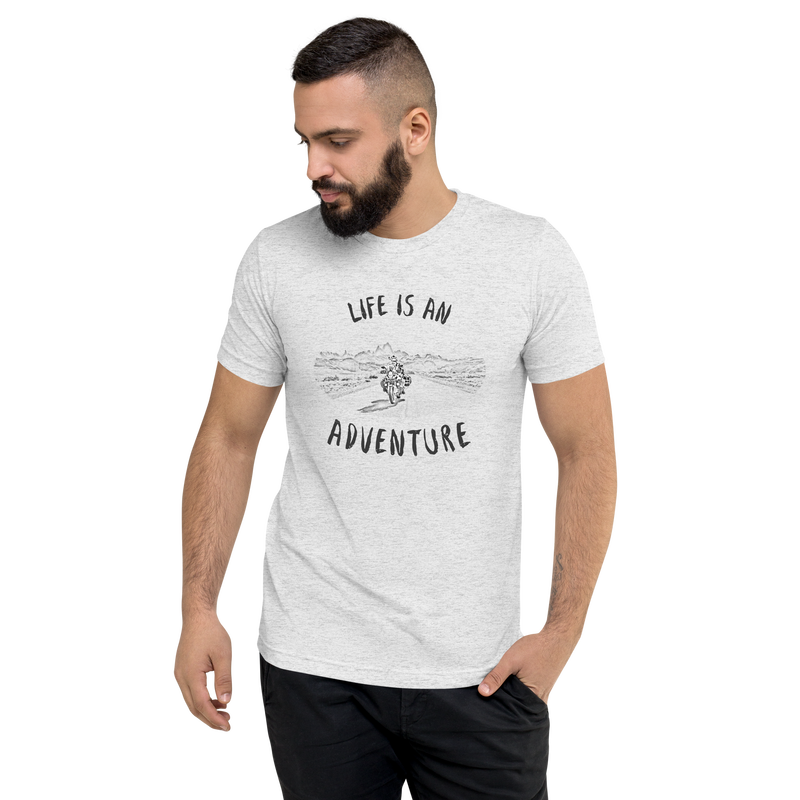By MarisaMost people who visit Africa usually go on a safari. And there's nothing else on the planet like it: driving through the flat grasslands of thorny acacia trees, telling your fellow travelers to hush when you think you see something, and then whipping out your camera and holding your breath as a several-ton elephant lumbers out of the trees. It's the stuff of legends. But there is a high price to be paid. Excluding the cost of actually getting to and from the African country in which you want to safari, and then finding transport, food, and accommodation, even just the safari itself may cost you upwards of $1,000. Per person, per day, of course. But there's a cheaper way: you can rent a car and do a self-drive tour through a place famous for its abundance of African wildlife: Etosha National Park in Namibia. You'll have control over everything, when you eat, where you go, how long you want to stay taking pictures of giraffes, and where you'll stay the night, all for a fraction of the cost. 4x4 Vehicle Rental (with rooftop tent): ~$100-$120 per day Entrance to Etosha Park: $5.50 per person, per day Camping within the park: $23 per person Camping outside of the park: ~$15 per person And if you really want to have the knowledge and expertise of a professional guide take you through the park, then you can simply join an Etosha game drive for around $50. Much better than the thousands of dollars that you'll pay elsewhere. Step 1: Rent a Car in WindhoekBecause our motorcycle was broken in Namibia and we had to wait for a part to arrive, we decided to rent a car and explore by 4WD in the meantime. This turned out not to be as damaging to our schedule as we thought, because most of Namibia's sites are not accessible by motorcycle, including Etosha National Park. So having a 4x4 vehicle is really the way to go. Windhoek is the capital city of Namibia, and is more or less in the middle of the country. That makes it fairly close to everything, and only a five-hour drive away from Etosha. So if you wanted to fly in, see the elephants for a couple days, and fly out, this could even be done in four days. We rented our car for nine days, and this was enough time to see pretty much everything we wanted to see in the whole country, including the stunning red dunes of Sossuvlei, some beautiful mountain passes, fur seals on the skeleton coast, a visit to a Himba village, and three days in Etosha. Click here to see our itinerary. If you have the time, three days in Etosha should be enough to have all your National Geographic dreams come true. And if you're lucky and see all your checklist animals on the first day, then you can use those extra days to relax by the pool, sleep in, or simply drive around to see it all again. But in the end, what you see on a safari is about luck. And if you don't see anything but giraffes and springbok on the first two days, then you might want to dish out the money for a game drive on the last. This will increase your chances of seeing wildlife because the drivers are in constant communication with each other throughout the park as to where the local lion prides are, for example. So it's pretty much a guarantee to see elephants and lions. Make sure you rent your car from a reputable agency (we didn't, and were stressing out the whole time about whether we'd get our deposit back). Namibian roads are very corrugated, and are known to eat up tires, so make sure you have at least one full-sized spare with you and a policy that covers a flat. Many rental agencies will provide you with two spares, and also look into coverage for chips in the windshield and other dents from rocks being flown at you. Most 4x4 rentals in Namibia will give you the option of having a rooftop tent. If you like to camp, this is definitely the cheapest (and in my opinion, most fun) way to go. Just make sure you zip up all of the netting since Etosha is in the malaria zone. Don't risk trading a cool breeze for a disease that may mess you up for a lot longer than an uncomfortably hot night. Step 2: Head to EtoshaThe thing about Etosha National Park which makes it so great for seeing wildlife is that unlike the Serengeti in Tanzania and Kenya, Kruger in South Africa, or the Okavango Delta in Botswana, Etosha is in a desert. That means that all the animals from the park must get their water needs at a watering hole, and lucky for us, they've built roads that lead directly to them. It's like driving up to The Lion King version of an outdoor theater at which you know the actors must show up. The National Park opens from sunrise to sunset, and the only way to stay longer is to stay within the park at one of their campgrounds or lodges. Though it's more expensive than staying outside, this is recommended because they have floodlit waterholes there which certain more nocturnal animals frequent, such as rhinos and leopards. The park is broken up into two sections: the east that runs along the Etosha mud pan and has the most wildlife action, and the west which is more desolate, but also more intimate with less tour buses. You can find plenty of animals there too, but in general it's not as concentrated. From Windhoek, you will most likely enter Etosha at Anderson Gate leading to Okaukuejo, which is right in the middle of the park on its southern edge. At the gate you'll fill out some paperwork, then pay once you get to Okaukuejo camp, which is 15 minutes up a paved road (one of the only paved roads). I suggest you stock up on food and snacks from outside the park, because even though there are restaurants and stores within, they are expensive and sorely lacking. There are two other main camps on the eastern side: Halali, which is where you should stay if you want to see rhinos at night, and Namutoni on the eastern edge, which is atmospheric with its thatched huts. All three camps have petrol and supplies. A good plan of action would be to start early in the morning at Okaukuejo, and to try to stop at as many watering holes as you can on your way to Halali for a lunch break. Then you can continue going east and end up by Namutoni, or a campground outside of there for the night. The next day, do it all in reverse. Having a map of the park is important, along with downloading offline Google maps of the area since many of the concrete “signs" in the park are worn away. And don't forget to pull over and talk to other safari-goers while at the watering holes. You might get some inside scoops on where the lions have been keeping their cubs, and where the elephant herds were last headed. On the third day, either decide to hit up your favorite spots, or venture into the western side to have a more private experience without all the tour buses. There are two camps out there, Olifantsrus and Dolomite, but they're not nearly as well-equipped as the others. Plus, camping at Olifantsrus is more expensive than at the other camps for reasons I can't figure out, and you won't find gas at either. Alternatively, if you've been having bad luck, use your last day to join a game drive and let the experts take you to where they know the animals to be. Step 3: Follow the Rules
Step 4: Enjoy the Wildlife!Because it's a desert, you won't find water-loving animals such as hippos, water buffalo, and crocodiles at Etosha. What you will see are antelope, zebras, giraffes, wildebeest, ostriches, warthogs, plus four of the “big five": elephants, lions, leopards, and rhino (no water buffalo). To get a better idea of what you're looking at, here's a list starting at the bottom of the food chain: AntelopeIf you can't see the gallery above, click here. Other HerbavoresRhinos: Etosha is famous for having many rhinos, both black and white varieties (you can tell the difference by their nose shape, not color). They are somewhat elusive, and we didn't see any, though we met lots of people who did. Either you're lucky and one crosses the road in front of you, or the best way to see them is to stay at a camp at the park overnight and sit by the watering hole. Rhinos love to socialize around the watering hole at night, and rumor is the camp at Halali may offer your best chances of seeing them. OmnivoresCarnivoresThere are also leopards and cheetahs at Etosha, but it's very rare to see them. To increase your chances, stay in the park overnight and watch the watering holes since leopards are mostly nocturnal. For cheetahs, I think you just have to be lucky. But you have a pretty good chance of seeing lions. We stayed three days, and after the first, we lost count of how many lions we'd seen. And once you figure out where they are on the first day, you can return to those same spots on the second and third day. Plus, the lions at Etosha are pretty used to big vehicles always around them, and they'll often just be hanging out right on the side of the road. It's very scary and surreal to be face to face with one staring right at you just meters away. The Circle of LifeWhen I was dreaming about going on a safari, mostly I just wanted to check off animals from my mental checklist, and take pictures of them to post on social media. But what surprised me was that once I got out there, I found the experience to be much deeper and more profound than that. Because the wildlife at Etosha are all so concentrated together, we were immersed in both the beauty of life and the horror of death. And I realized that I felt passionately for both sides of the “war". I watched the little springboks cautiously take a drink, looking out for predators, and I admired the way they jumped and frolicked like innocent fawns from Fantasia. But then when I saw the lions with their adorable fuzzy cubs, I couldn't help but want to root for them also to get enough food to feed their young. It was like living inside a BBC David Attenborough nature documentary, and it was a real learning experience for me, showing me that within nature, good and evil are only a matter of perspective. Safaris are perfect for all ages (except maybe babies). But if you have children, then what better way to spend your vacation time with them? Come to Namibia, and I promise your kids' eyes will widen with wonder and delight (and your eyes will too). All in all, I feel deeply satisfied with my African safari, and the fact that I didn't break the bank to do it, is even better. Next, Tim and I get back on our bike and head to Botswana! So stay tuned! |
Follow UsRide with us from Chicago to Panama!
2Up and Overloaded Get inspired by the tale that started it all:
Maiden Voyage 20 author's tales of exploring the world!
The Moment Collectors Help us get 40 miles further down the road with a gallon of gas!
Become a Patron for early access to our YouTube Videos!
Subscribe to our YouTube Channel!
Subscribe to our Blog by Email
|
2Up and Overloaded
Join our clan of like-minded adventurers...
Proudly powered by Weebly
Designed by Marisa Notier

